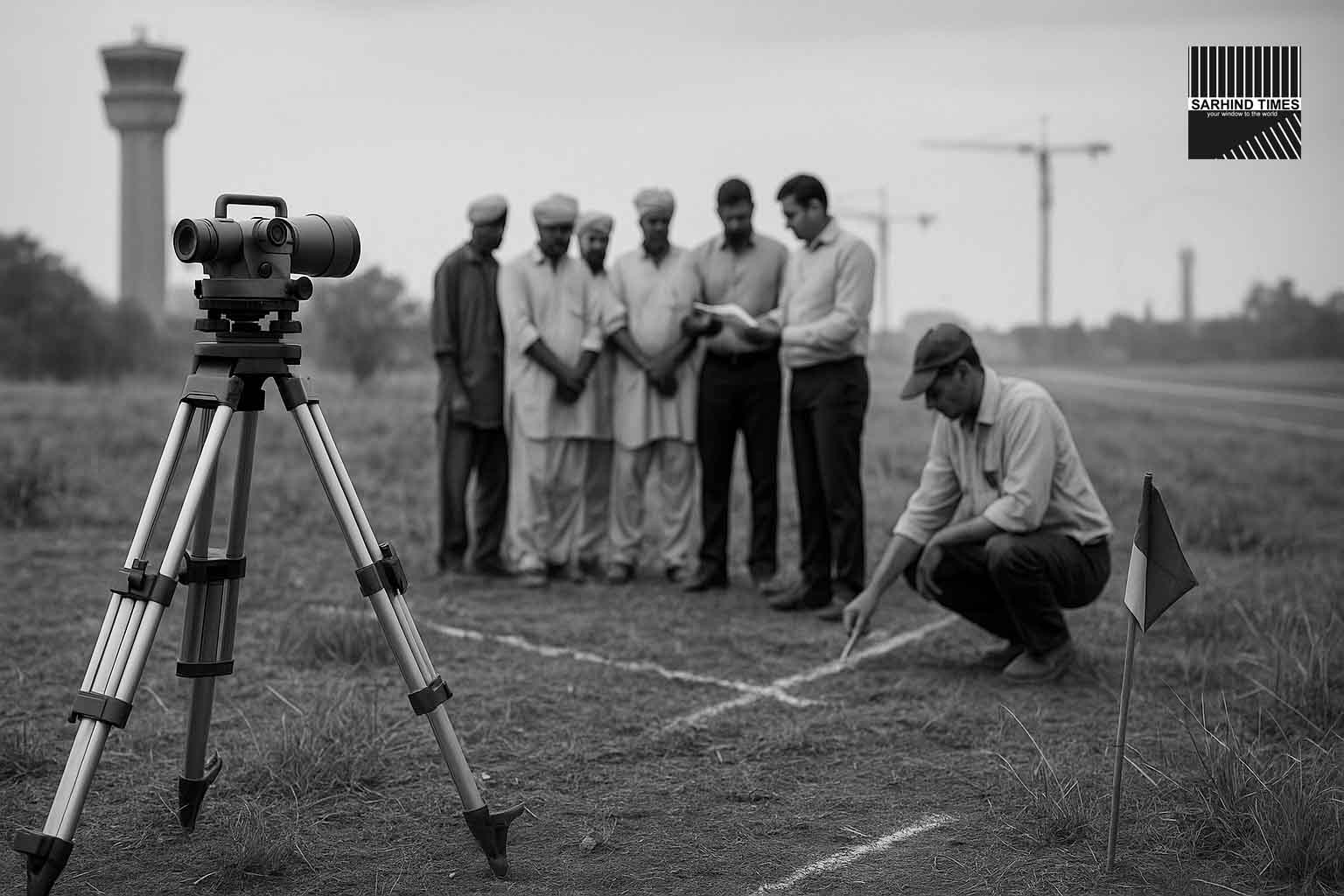With the district administration setting consent and paperwork timelines, land acquisition for Pune’s proposed Purandar airport enters a decisive phase—pitting connectivity goals against unresolved questions on compensation, rehabilitation, and environmental due diligence.
The quick take (for readers in a hurry)
- What’s new: Farmers have been given a near-term deadline to submit consent letters, after which joint land measurements are slated to begin.
- Why it matters: The greenfield airport is pitched as essential to decongest Pune’s air traffic and unlock regional growth; past attempts have repeatedly stalled on farmer resistance and procedural snags.
- What’s contested: Valuation, resettlement, livelihoods beyond land price, and sequencing of environmental and multi-agency clearances.
1) What the new deadline means on the ground
According to the Pune district administration, farmers have been asked to file consent letters by the stated cutoff; joint measurement of land parcels is expected to begin shortly thereafter. Practically, this shifts the process from generalized intent to parcel-specific action—surveyors, boundary demarcations, and documentation that typically precede formal acquisition steps. The administration has also scheduled hearings/document checks to compress lag between consent and measurement.
For affected families, the deadline sets a clock: either engage—negotiate, file objections, seek clarifications—or risk decisions being taken without their preferred inputs. For officials, it is a way to sequence survey, valuation, and compensation workstreams that too often sprawl in large projects.
2) Why the airport is back in focus
Pune’s existing civil operations share the Lohegaon (IAF) air station, constraining slots and expansion. Policy-makers argue a greenfield site at Purandar is the only scalable fix to capacity, cargo handling, and long-haul ambitions. A recent high-level review led district officials to target an accelerated acquisition window of four to five months, with acquisition planned under the MIDC Act alongside the 2013 land acquisition law—pairing monetary compensation with developed plots, housing, and training pathways. Farmer groups, however, have pushed back on valuations and the adequacy of R&R (resettlement & rehabilitation) promises.
3) The compensation debate: beyond the cheque
On paper, modern acquisition frameworks blend cash (often up to 4× market rate in rural belts) with non-cash entitlements—developed plots, housing, skill development, and priority in local employment. But large projects rarely hinge on the cheque alone. Farmers question:
- Whether comparables used for valuation reflect true future appreciation once an airport anchors development;
- How tenant farmers, landless labor, artisans and ancillary livelihoods will be recognized;
- Whether timeline certainty exists (compensation paid before displacement; infrastructure ready before livelihoods are disrupted).
These are not abstract worries. Multiple mega-projects have seen time-lag risks—cheques clear, but service infrastructure or alternative opportunities trail behind. The district’s hearing window will be the place to pin down these assurances.
4) Is the land footprint changing?
Reporting in late August indicated that the overall land plan may be scaled down versus earlier iterations—an attempt to reduce friction and speed owner buy-in. While exact acreages shift across documents and stages, the policy signal is clear: right-sizing to core aviation needs first, and phasing ancillary real-estate later, if at all. Local reportage framed the revision as a “major shift” to unlock stalled consent.
Separately, some coverage through the year pointed to ambitious acquisition-completion targets (from spring to late-2025), but those timelines are best read as administrative aims rather than guaranteed dates, given continuing objections.
5) How much consent is really in place?
District and local news outlets in September have cited rising consent shares, with one report suggesting around 70%+ farmer consent. Treat such figures as directional, not definitive until an official, consolidated update is published—consent is a rolling tally that can shift as households add conditions or withdraw. Still, the trend line suggests more engagement than in prior cycles, a key change from earlier stalemates.
6) The procedural stack: who must align, and when
Even if land issues move, the airport remains a multi-agency puzzle:
- State industrial/airport agencies for acquisition and project SPV;
- MoD/IAF for airspace and security coordination;
- DGCA/BCAS/AAI for regulatory and operational standards;
- Environment & forest clearances (including any wildlife/hydrology assessments) to satisfy statutory requirements and mitigate litigation risk;
- Civil aviation policy at the Centre for bilateral rights, route dispersal, and cargo facilitation.
Past attempts faltered on this coordination layer. The current push emphasizes front-loading measurements and documentation so parallel streams—techno-feasibility, EIA, financing—can run with fewer surprises.
7) Regional planning ripple effects
The Pune Metropolitan Region Development Authority (PMRDA) has proposed bringing 180 villages (Baramati + Purandar) into its fold—explicitly linking that urban-planning move to the airport’s growth halo. If approved, this would expand PMRDA’s jurisdiction and give planners tools to control unplanned sprawl, regulate FSI/TDR, and align trunk infrastructure (roads, water, waste, drainage) with the airport corridor. For residents, it raises questions on land-use change, developer interest, and property taxation, making the case for transparent master-planning and anti-speculation safeguards.
8) The farmers’ case: price, place, and dignity
Farmer leaders have reiterated that undervaluation and livelihood disruption remain central. In meetings and protests this year, they flagged:
- Soil and micro-climate specificity: not all acres are equal; irrigated tracts and multi-crop belts merit differentiated treatment;
- Livelihood ladders: R&R must include viable pathways into the airport-linked economy (logistics, services, construction) rather than rely solely on cash windfalls;
- Sequencing: no eviction before final, disbursed compensation and site-ready R&R.
The administration’s current approach—hearings + joint measurement—can either rebuild trust (if used to lock in household-level solutions) or harden resistance (if seen as procedural box-ticking).
9) Aviation logic: why Purandar works on paper
A greenfield site south-east of Pune allows:
- Two-runway geometry with future expandability;
- Cargo + MRO clusters buffered from dense habitation;
- Surface access via upgraded corridors to the Pune ring road/expressway network;
- Slot independence from an IAF base (a binding constraint at Lohegaon).
These are standard greenfield advantages. But the execution risk—funding, clearances, and social license—often determines whether a paper-perfect site becomes a working hub.
10) Money, markets, and momentum
High-level meetings during the monsoon reviewed financing and land progress and floated aggressive completion targets for acquisition. Optimistic timelines can galvanize bureaucracy and contractors—but they can also over-promise and under-deliver if social and environmental negotiations lag. For credibility, officials will need monthly public dashboards: hectares measured, households compensated, R&R plots handed, EIA milestones cleared, and contracting status.
11) Environmental due diligence: a litigation tripwire
Large-footprint projects in semi-arid belts invite scrutiny over watersheds, flood plains, biodiversity, and micro-climate impacts. If EIAs or public hearings are perfunctory, projects face stay orders. The smarter play: use the present window to over-comply—transparent baselines, mitigation budgets, and community-level adaptation (check dams, afforestation, storm-water, and heat-resilience features).
12) What to watch next (reader checklist)
- Consent conversion: How many consent letters translate into completed joint measurements without dispute?
- Valuation clarity: Will the administration publish circle-rate vs payout matrices and NSDL-mapped beneficiary lists?
- R&R specifics: How soon are serviced plots/housing readied relative to vacate notices?
- Clearances: Sightings of EIA scoping, ToR approvals, and MoD/airspace coordination.
- PMRDA decision: Whether village inclusion is approved—and with what guardrails against speculation.
13) The bottom line
The new land-acquisition deadline is not the finish line—it’s the starter pistol. If the state can pair fair, timely compensation with verifiable R&R and clean clearances, Purandar could advance from a decade-long PowerPoint to an actual runway. If not, the season ahead may bring fresh petitions, protests, and pushbacks—and Pune’s air-capacity crunch will linger.
#PurandarAirport #Pune #LandAcquisition #Infrastructure #Aviation #RAndR #Maharashtra






















+ There are no comments
Add yours